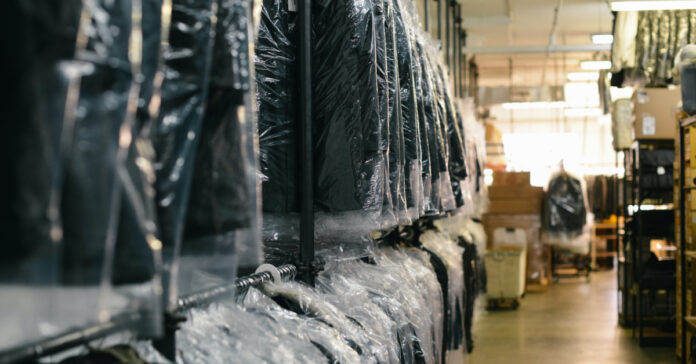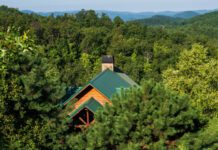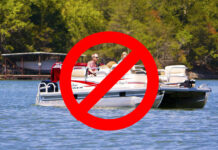The other day, we drove 50 miles to go to the dry cleaner.
OK, that’s a bit of an exaggeration. We did go to the dry cleaner, and it is more than 50 miles away, but we didn’t go just to the dry cleaner. Instead, we turned our excursion into a multi-stop road trip. We visited an antique store my wife wanted to see, a feed mill I wanted to visit, and Lowes Home Improvement. Only then did we drop the clothes we wore to a recent wedding off at the dry cleaner. On the way home, we stopped at one of our favorite restaurants for either a late lunch or an early dinner. Then we got gas at the cheapest place we had seen, saving a dime per gallon over our local prices. Altogether, it was about a seven-hour round trip and we put more than 100 miles on the car. That’s just the cost of rural living.
Because we live in a remote area, the closest dry cleaner is more than an hour away. I guess dry cleaning is a bit like sushi restaurants. When I lived in New York City, there was one on every corner. Out here in Appalachia, there’s not even one per county. You know what? I’m OK with that.
The Feed Mill
The feed mill was a win. I’ve been buying all my chicken feed and most of my animal and garden supplies at a general store that does a lot of feed business. I also make an occasional trip to Tractor Supply. With the rate at which prices have been rising, I decided I needed to do better. Unfortunately, there are no local feed mills, probably because we are too mountainous an area to have many farms. We have far more small homesteaders and people who raise a few cows than we have large-scale farms.
Prices at the feed mill were significantly lower than what I have been paying at the general store. For example, I was buying 50-pound bags of layer feed with 16 percent protein for $22.50 at the general store and $21.50 at Tractor Supply. (A year ago it was $17 or $18 per bag). They were $14.75 at the feed store. The 5-grain scratch I buy is $14.99 for 30 pounds at Tractor Supply. It was $14 for 50 pounds at the feed store.
Guess I’ll be driving the extra 10 or 12 miles to go to the feed store.
In any case, I took advantage of the lower pricing and now have 4.5 months of chicken feed on hand. I’m going to feed our old feed for another couple months and then mix the two kinds together and gradually transition the chickens over to the new stuff. The feeds are similar in content but different brands. It’s always best to make a slow transition from one kind of feed to the other rather than a rapid switch.
These lower prices will allow me to keep the price of my eggs steady for at least the next few months. I’ve heard rumors that feed prices could double, in which case our egg prices will, too.
Packing and Carrying
I’ve always called wearing a concealed weapon “carrying” like concealed carry, but out here in the mountains they call it “packing” as in, “Are you packin’?” I’ve concluded that almost everyone around here is packing. Since moving out here, I’ve seen pickups with gun racks in the rear window, something I haven’t seen seen since I graduated college. Even more surprising, the racks usually carry AR15s or other black sporting rifles, not the lever actions or bolt guns I might have expected a hunter to carry. I have to admit, seeing that makes me feel good, like we were living in a free country. Perhaps it would be more accurate to say we are living in a free county. I’m not so sure the entire country is free anymore, especially in those big coastal cities dominated by leftists.
As we loaded up her car for our mini road trip, my wife said, “Why are you bringing two backpacks?” I told her it was because her car was not as well equipped as my truck, which is true. Besides, if we ended up hoofing it, I wanted each of us to have a backpack. One backpack had with my Sub 2000 in it and another had a spare Glock. Both use the same magazines, as does my carry Glock. Each bag also had a bottle of water, snacks, a few MRE entrées, first aid supplies, various survival gear, and necessary accessories like hats and spare socks.
We didn’t need any of it, but neither did we need our spare tire or my insurance card, but I travel with both just to be safe. Throwing a bag into the vehicle is a small act that might have a big positive impact if the SHTF while we are on the road.
The Great Decline
I consider myself lucky to live far from any of those big coastal cities I mentioned, but our location is the result of careful planning, not luck. This country continues to decline, and many of the problems that drag us down start in those big cities. When the SHTF, those 50 miles I had to drive to get my suit cleaned will pay off.
If you can see the speed at which our country is declining, my advice is to get out of the cities. Even a small city or a large town is a big improvement from a large liberal city in a large state run by socialists. A small town is even better, especially if an interstate doesn’t run through it. There will be less crime, better public schools, a lower cost of living, and you will have more space and lower population density. It’s also much easier to survive outside the city than inside.
Try to become more self-sufficient, to produce more of your own food, and get to know a few homesteaders or farmer’s market sellers who can supply you with food when the trucks stop rolling. Build relationships and become a member of the community. When the collapse comes, no matter how self-sufficient you are, you will need others you can rely on.








Diesel just went up .50 cents over night up here in the north
Comments are closed.